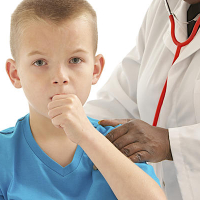
To read the full review go to: Continuous positive airway pressure (CPAP) for acute bronchiolitis in children
Plain language summary
Review question
Is continuous positive airway pressure (CPAP) better or worse than supportive treatment for children with acute bronchiolitis?
Background
Bronchiolitis is inflammation of the small airways in the lungs, and a common cause for emergency department treatment amongst young children. Children with acute bronchiolitis usually receive supportive care that includes ensuring adequate hydration, with oxygen added as needed. Treatment with CPAP involves providing positive air pressure by blowing air from a pump to keep airways open, and may be effective for children with bronchiolitis. This is an update of a review first published in 2015 and updated in 2019.Search date
15 August 2021.
Study characteristics
We included three small randomised controlled trials (studies in which participants are randomly assigned to one of two or more treatment groups) involving a total of 122 children aged up to 12 months who were diagnosed with bronchiolitis. We did not identify any new trials for inclusion in this update. The three studies were conducted at single centres in France, the UK, and India. All studies compared CPAP with standard therapy.
Study funding sources
One study was funded by a university hospital; one reported that no funding was received; and the third study did not mention the funding source.
Key results
The limited available evidence prevented any conclusions regarding the effect of CPAP on the need for mechanical ventilation in children with bronchiolitis. Limited, low certainty evidence indicated that breathing improved (respiratory rate decreased) in children who received CPAP. The length of time children spent in the hospital was similar between the CPAP and the standard therapy groups. No children in the studies were reported to have died. The studies did not report on time to recovery, change in partial oxygen pressure, how often children were admitted to hospital from the emergency department, how long children were in the emergency department, or the need for intensive care admission. There were no local nasal effects or shock as reported by one study. No children were reported to have had air in the cavity between the lungs and the chest wall, causing lung collapse (pneumothorax) as reported by one study. Two studies did not report on local nasal effects, shock, or pneumothorax. The study added in the previous update of the review in 2019 contributed data to the assessment of respiratory rate and the need for mechanical ventilation.
Certainty of the evidence
We found limited, low certainty evidence related to CPAP for children with bronchiolitis. The certainty of the evidence was reduced due to high risk of bias, losses to follow-up, selective reporting, and the wide range of values reported by the included studies.
